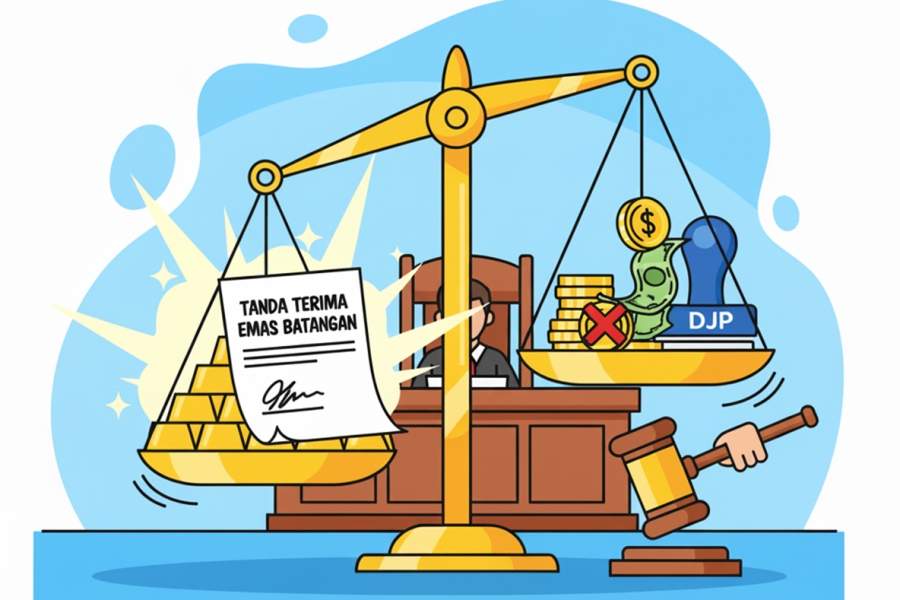
The gold jewelry industry consistently faces complexity in applying the special Value Added Tax (VAT) regime in Indonesia. Under the VAT provisions for Gold Jewelry applicable in the April 2018 tax period, specifically Minister of Finance Regulation Number 30/PMK.03/2014 (PMK-30/2014), Taxable Persons (WP) were given the option to utilize a Special Tax Base (DPP) of 20% of the difference between the Selling Price of Gold Jewelry and the price of 24-carat gold bars supplied by the customer to replace all raw materials. This case of PT UBS (formerly PT KGS) highlights a fundamental conflict between the Tax Authority (DJP) and PT UBS regarding the sufficiency of evidence required to claim this special DPP, which resulted in a massive VAT DPP correction of Rp. 29,780,750,112.00 by the DJP.
The core conflict stemmed from differing views on the validity of the documentation. PT UBS firmly asserted that they had complied with the normative requirements of Article 4 (2) of PMK-30/2014, supported by 24-Carat Gold Bar Receipts signed by customers, which clearly demonstrated the mechanism of customers supplying gold bars to replace raw materials. Conversely, DJP categorically rejected the admissibility of these internal documents. The DJP argued that, in the absence of standard gold certificates, the 24-carat grade claimed for the gold supplied by customers could not be competently proven. Furthermore, the DJP contended that production shrinkage is inevitable in the gold jewelry industry, implying that not all raw materials could have been replaced by the customer's gold, thus invalidating the special DPP provision.
After reviewing all the evidence, including the Examination Minutes and PT UBS's internal documents, the Tax Court Panel reached a resolution favorable to the Taxable Person. The Panel explicitly expressed its conviction in the veracity of PT UBS’s claim, particularly regarding the mechanism of customers supplying 24-carat gold bars for raw material replacement, substantiated by the Receipts. The Panel ruled that the DJP’s adjustment, which was based on the assumption of production shrinkage—an argument deemed irrelevant to the VAT DPP formula—was unfounded. The Court confirmed that PT UBS had met the substantive criteria for applying the special DPP.
The implications of Decision Number PUT-000936.16/2024/PP/M.IA Tahun 2025 are highly significant. The ruling provides a crucial lesson for Taxable Persons, particularly gold jewelry traders, on the critical importance of internal documentation's validity and consistency in facing tax audits, even when such documents are not formal instruments like external certificates. The Panel's decision emphasizes that in tax disputes, PT UBS's success hinges on the ability to prove the transaction's substance before the court. Although the VAT regime for gold has shifted to a Specific Amount VAT basis through PMK Number 48 of 2023 and PMK Number 11 of 2025, the principle of robust evidence remains paramount. This decision serves as an important precedent, testing the limits of the tax authorities' power to impose evidence requirements, while simultaneously affirming PT UBS's right to utilize special provisions stipulated in tax regulations.
A Comprehensive Analysis and the Tax Court Decision on This Dispute Are Available Here.